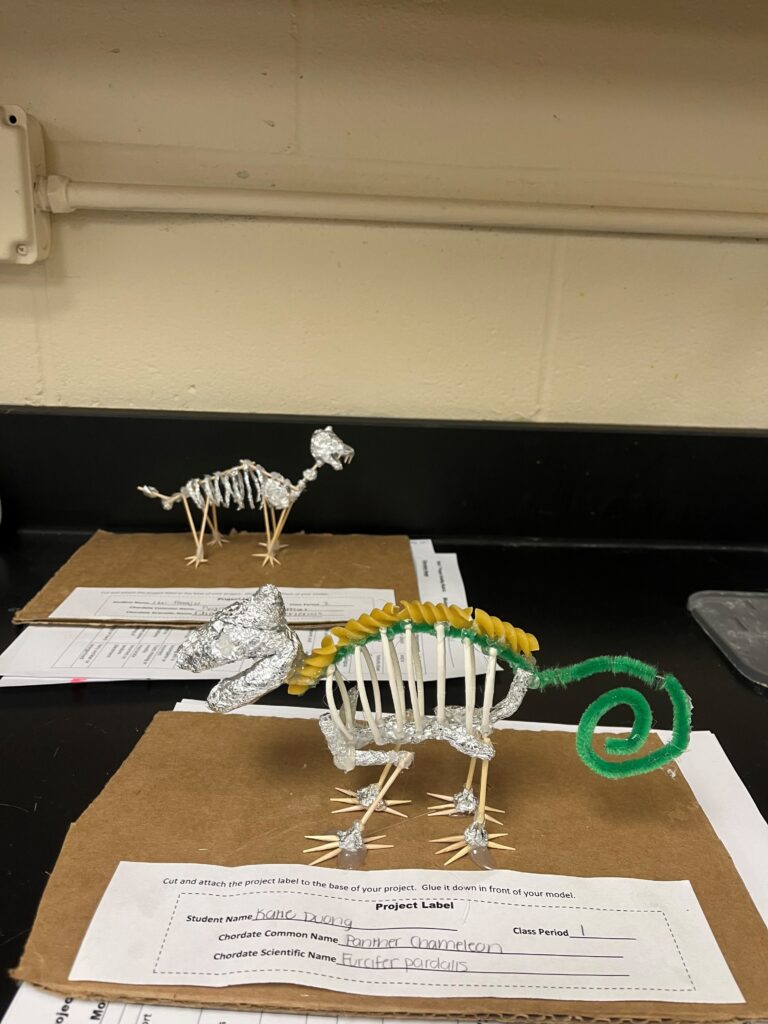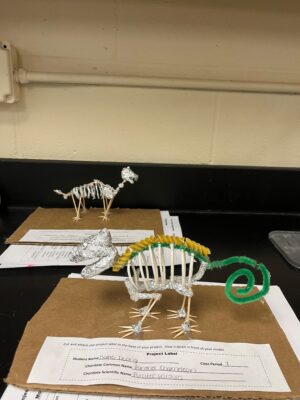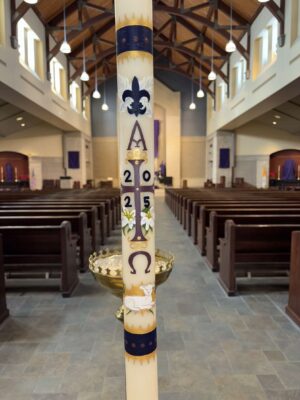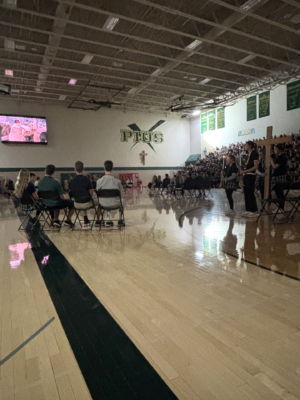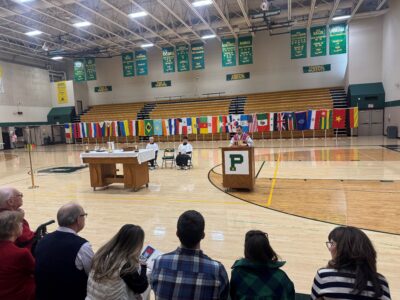Students in science teacher Jenna Steenson’s biology class built models of various chordate skeleton structures and designed cladograms to learn more about evolution.
“One of the focal points of creating the model is for students to focus on evidence of evolution, and that is by looking at how structures are similar between species and how that serves as evidence,” Steenson said.
Freshman Paul Mollard thought that building the model of his chosen chordate was the hardest part of the project.
“Building my model of the mallard duck because I had to be very precise, and I needed to plan it out before I made it,” Mollard said.
After building the model, the students were challenged to design a cladogram that showed how closely related their chordate was to other more similar species.
“They’re connecting the similar traits to other semi-related organisms, and they can really see that in the final project,” Steenson said. “Then it is kind of laid out with the cladogram, where the students categorize organisms based on their traits and their taxonomy.”
Freshman Samuel Brandl felt that the cladogram was challenging to design.
“It took a lot of time in research and getting down to the different families and orders and specific classifications that we had to use to find common traits,” Brandl said.
The project helped Brandl appreciate the hard work scientists do to classify species.
“It really helped show me the great care scientists go to to show common traits so that we can better see common ancestors and how different organisms are related to each other,” Brandl said.
Steenson enjoys seeing how the students use their creativity to build the model and design their cladogram.
“I like this project because it lets me see the students’ creativity play out in an evolutionary story,” Steenson said.

